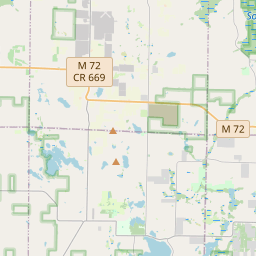Civil War Memorial
Historical marker location:






April 12, 1861: The Civil War begins with the Confederate attack on Fort Sumter, located in South Carolina's Charleston Harbor.
April 15, 1861: President Abraham Lincoln issues a call for 75,000 volunteers to serve in the Union Army to suppress the rebellion.
May 24, 1861: The first major land battle, known as the First Battle of Bull Run (or First Battle of Manassas), takes place in Virginia. It ends in Confederate victory.
September 17, 1862: The Battle of Antietam in Maryland becomes the bloodiest single-day battle in American history, with heavy casualties on both sides. The Union forces, commanded by General George McClellan, manage to halt Confederate General Robert E. Lee's advance into Union territory.
January 1, 1863: President Lincoln issues the Emancipation Proclamation, declaring that all slaves in Confederate-held territories are to be set free. However, the proclamation does not immediately free all slaves in the United States.
July 1-3, 1863: The Battle of Gettysburg in Pennsylvania takes place, resulting in a significant Union victory and inflicting heavy casualties on Confederate forces. It marks a turning point in the war.
November 19, 1863: President Lincoln delivers the Gettysburg Address, emphasizing the principles of liberty, equality, and the preservation of the Union.
April 9, 1865: General Robert E. Lee surrenders to Union General Ulysses S. Grant at Appomattox Court House in Virginia, effectively ending the Civil War.
April 14, 1865: President Lincoln is assassinated by John Wilkes Booth while attending a play at Ford's Theatre in Washington, D.C.
May 10, 1865: Confederate President Jefferson Davis is captured, signaling the collapse of the Confederate government.
December 6, 1865: The Thirteenth Amendment to the United States Constitution is ratified, officially abolishing slavery throughout the country.
While this timeline provides an overview of key events, it is important to note that the Civil War spanned over four years, from 1861 to 1865, and encompassed numerous battles, campaigns, and political developments that shaped the course of American history.
The name "Michigan" comes from the Ojibwe word "mishigamaa," which means "large water" or "large lake." This refers to Lake Michigan, which is one of the five Great Lakes that border the state.
In 1840, the government surveyed the area, and Grand Traverse County was officially established in 1851. The county's name comes from the French words "grande traverse," meaning "long crossing," referring to the Grand Traverse Bay. The county seat, Traverse City, was founded in 1852 and quickly became a hub for the lumber industry.
During the late 19th and early 20th centuries, the logging boom brought prosperity to Grand Traverse County. Huge pine forests covered the region, providing abundant timber for construction and wood products. However, this era also led to deforestation and environmental challenges, as well as the decline of the logging industry in the early 20th century.
In the 20th century, Traverse City transformed into a center for agriculture, tourism, and cherry cultivation. The sandy soil and favorable climate proved suitable for tart cherries, making the region one of the leading producers in the country. Today, Grand Traverse County is known for its scenic beauty, vibrant culinary scene, and thriving tourism industry.
Grand Traverse County Timeline
This timeline provides a glimpse into the major events and milestones that have shaped the history of Grand Traverse County, Michigan.
- 1839 - Grand Traverse County is established by the Michigan Legislature.
- 1847 - The county's first permanent settlers arrive, including Harry Boardman and his family.
- 1851 - The county's first school is built in Boardman Township.
- 1852 - Grand Traverse County's first sawmill is constructed.
- 1853 - The county's first courthouse is built in Old Mission.
- 1860 - The population of the county reaches over 2,000.
- 1870 - Railroad service is introduced to the county, improving transportation and trade.
- 1881 - Grand Traverse County's first newspaper, the Traverse City Herald, is established.
- 1885 - The county's first electric streetlights are installed in Traverse City.
- 1895 - The Traverse City State Hospital (now known as the Village at Grand Traverse Commons) opens its doors.
- 1915 - The county's first automobile bridge, the Seventh Street Bridge, is constructed.
- 1953 - Cherry Capital Airport opens and becomes an important transportation hub.
- 1967 - Northwestern Michigan College is established, providing higher education opportunities in the county.
- 1982 - The Traverse City Film Festival is founded, boosting the county's cultural scene.
- 2001 - The county's population surpasses 80,000 residents.